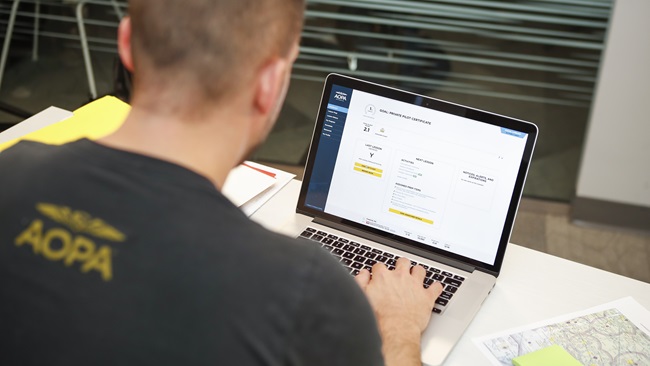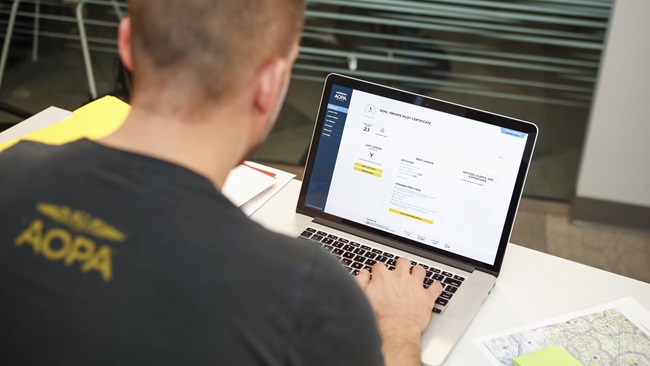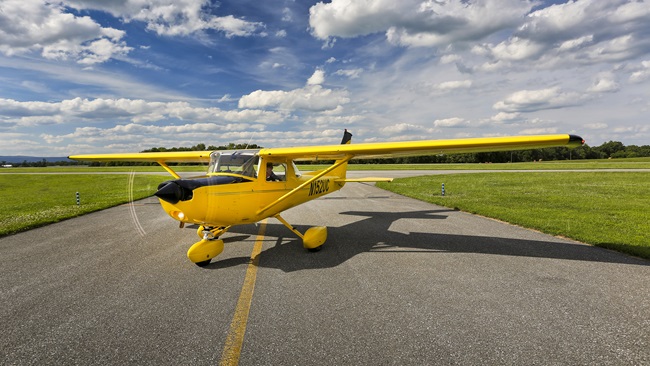The Kid
Sharing the joy of flying with a younger generation

I don’t have kids, but my friend Laura, the principal of a private school in upstate New York, has two, and one of them realized he needed to become an airline pilot during his first takeoff in economy class. He was three years old. When he and I met, he was 10. “I’ve told him of your exploits all the time,” Laura said. “He always wants to know.” Wow. I have exploits.
He asked me if I wanted to co-pilot his Microsoft Flight Simulator. I didn’t but I said I did anyway—because, after all, I have exploits—so we took off from JFK in an Airbus A320, skimmed Rockaway Beach, and flew up the Hudson River. Then he dragged me to his room so I could see his models and his books. Finally, he let me take off my coat.
Now he’s 13, and a little sullen. For Christmas Laura wanted to give him an introductory flight, and through the magic of Google I found a flight school at Orange County Airport, which is near their house, with a Piper Warrior. I sent him an old checklist.
Laura said he stared at it quietly for a long time. “What are mags?” he asked.
The Warrior has a fuel system sort of like an airliner, and I also took my first lesson in one. Unlike the instrument panels in Microsoft Flight Simulator, the Warrior instrument panel has more than 35 items. And unlike Microsoft Flight Simulator, reality is turbulent—and there’s traffic, and it forces you to concentrate on everything at once. The kid had no idea what he was in for. He’s just a kid.
I had to call him.
“Hey, kid, let’s go over that checklist.” He didn’t seem to want to, but we did anyway.
“OK, for now don’t worry about all those radios and stuff on the right side of the panel. You really only need to know the most important five or six instruments, the ones grouped behind the yoke. You know, the steering wheel.”
“I know what the yoke is.”
We went through each item, which only took an hour and 10 minutes. Still unconvinced that he understood everything, that weekend I trekked upstate, and we drove to the FBO and climbed inside a real Warrior’s real cockpit. I made him strap into the pilot’s seat, and we went through the checklist one more time. I explained why an airplane has magnetos, and why it’s important to check them. How to set the altimeter and directional gyro. Why you go over the checklist. Why flying is a deadly serious business.
Then, suddenly, it hit me. I was sucking the fun right out of it. I tried to recover by not lecturing him when he started playing with the flaps and toe brakes, and when he kept ensuring that the controls were both free and correct. Although it was getting on my nerves.
“Oh, never trust the fuel gauges. Let me show you the fuel,” I said, and we crawled out of the cockpit and beneath the right wing. I pressed the sump bar and fuel soaked my hand. “Make sure there’s no crud in it. It’s always going to be blue, and this is what it smells like.” I touched his nose with my dripping fingers, and wiped them on his sweat pants.
“Hey!” He laughed.
“Sorry,” I said. “Slipped.”
Despite that last-minute recovery, I felt like I was losing him. So I called an instructor who has taught a couple of young pilots, and who has three little kids. He’s a big bear of a man in his late 20s, but he looks about 18 years old, 21 on a good day.
“Be patient,” he advised me. “He’s just a kid.”
Well, yeah, of course. He can’t solo until he’s 16, can’t get his license until he’s 17. There’s plenty of time. But how to phrase things? Like, you never ask a kid, “How was school?” and expect to get more than a one-word answer. When I got home I Googled phrases to ask a teen about his school day. This is what I got, which I’ve translated into aviation speak:
What was the best thing that happened? What was the worst?
Tell me a weird term that you heard today.
Tell me one thing that you learned today.
When were you bored?
What word did your instructor say most today?
What do you think you should do/learn more?
What do you think you should do/learn less?
If you got to be the instructor tomorrow, what would you do?
Finally, if they make a stupid joke, laugh. At least they’re talking.
Weeks later the kid finally got his lesson. I was hanging out at home when he called.
“How was it?” I asked. Ugh, that sounded too much like, “How was school?” But he still said something.
“I wish I could think of a better word than cool,” he said. I laughed.
“Did you remember everything I told you?”
“Maybe a quarter of it,” he said. “I remembered how to check the mags.”
“I was more worried about this than you.”
“I know.” He laughed.
Since then he’s been taking a lesson at least once a month, and I’ve been asking better questions. The kid seems good and hooked. I’ve done my job.
Never too young to dream
Five ways to keep kids excited about aviation—before they can solo an airplane
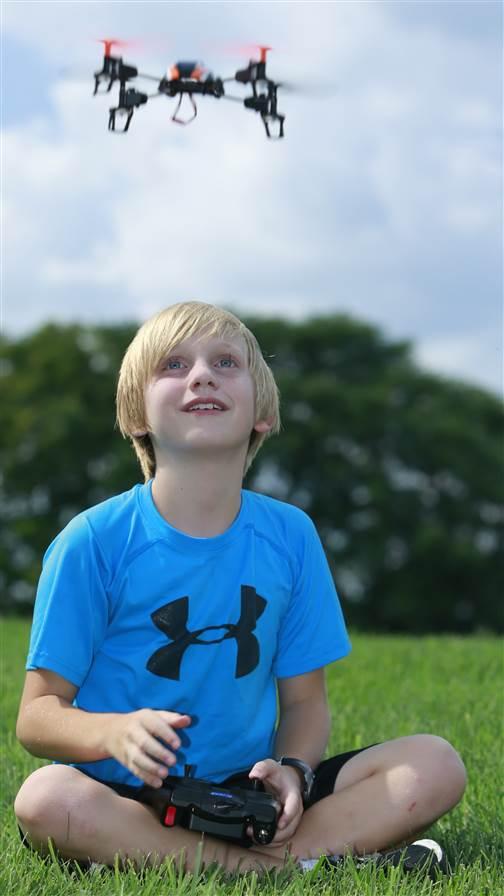 Student pilots can solo an airplane at 16 and earn a private pilot certificate in one at age 17. But don’t let age requirements dampen the enthusiasm of an enthusiastic young person. In addition to formal programs designed to get youth involved in aviation, these activities can help keep the spark alive.
Student pilots can solo an airplane at 16 and earn a private pilot certificate in one at age 17. But don’t let age requirements dampen the enthusiasm of an enthusiastic young person. In addition to formal programs designed to get youth involved in aviation, these activities can help keep the spark alive.
Drones. For the child who’s always looking up, drones are a relatively inexpensive way to stay excited about aviation. Unmanned aircraft systems and remote-controlled aircraft run the gamut of prices and complexity, and provide an opportunity to teach students about aerospace engineering and principles of flight. The minimum age to earn a remote pilot certificate is 16, but hobby flying requires no certificate.
Models. What better way to understand the mechanics of flight than to fly a model aircraft you built yourself? Many a pilot has gotten started in aviation by building scale models.
Sims. Flight simulators range from video-game-style desktop programs to highly realistic full-motion trainers. Independent-minded kids can explore on their own using Microsoft Flight Simulator or, more formally, at a flight school using Redbird Flight Simulations’ GIFT: Guided Independent Flight Training.
Soaring. The minimum age to solo a glider is 14, and gliders’ lower operating costs make them more achievable for kids. Many glider clubs also offer flight time in exchange for work as ground crew and other chores—and the social aspect of glider clubs makes them great venues for young people getting started in aviation.
Going to the airport. Whether it’s airplanes taking off and landing on a regular Saturday or a fly-in with a variety of aircraft on display, there’s plenty of excitement for kids at your local airport. Treat a kid to lunch at the airport restaurant and watch the parade of aircraft, or hang on the fence for an afternoon. Add some variety by stopping at airports while traveling; you can even go sightseeing the aviation way, by taking a biplane ride or helicopter tour.
How about a summer camp?
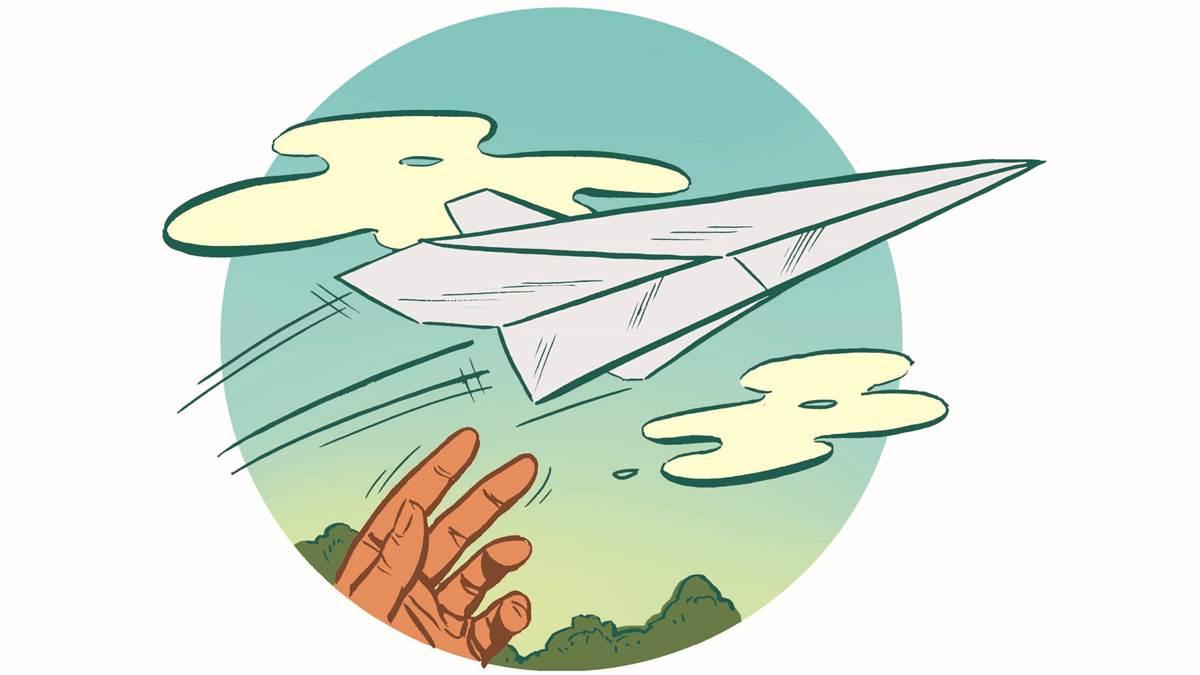 It’s never too early to start planning for a summer camp experience. Check out these opportunities:
It’s never too early to start planning for a summer camp experience. Check out these opportunities:
- Aviation Day Camp, San Carlos, California
- Aviation Camp, Lexington, Kentucky
- Aviation Camp, Long Beach, California
- Aviation Center of Excellence, Jacksonville, Florida
- Aviation Space Camp, Alberta, Canada
- Balloon Museum Camp, Albuquerque, New Mexico
- Camp Wings, Belleview, Florida
- Destination Aviation, Lakeland, Florida
- EAA Young Eagles, Oshkosh, Wisconsin
- Flight Training Adventures, Fairfield, Iowa
- Future Flight, Hilo, Hawaii
- Hammond Summer Programs, Columbia, South Carolina
- Hot Air Balloon Summer Camp, Tyler, Texas
- Museum of Flight ACE, Seattle, Washington
- New Garden Flying Field Aviation Camp, Toughenamon, Pennsylvania
- OU Sooner Flight Academy, Norman, Oklahoma
- Randolph Macon Academy, Front Royal, Virginia
- Virginia Space Flight Academy, Wallops Island, Virginia
